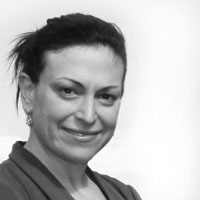At the beginning of April, the Empire State Building lit up blue in honor of Autism Awareness Day. The day marked a chance to raise awareness—and, not incidentally, to raise funds for autism research.
In 2012 (the most recent statistic), private charities and the federal government spent $331,949,933 on autism research.
The Office of Autism Research Coordination (OARC), a department within the National Institutes of Mental Health that tracks autism research and spending, issued a report on April 19 (available here) that tracked autism research money spent in 2011 and 2012.
OARC’s findings disturbed the Autistic Self-Advocacy Network (ASAN), a rights group run by and for autistic people. They noted that the study showed that only 1 percent of research money was spent on needs of adults with autism—and this actually represented a decline from 2 percent in 2011.
Further, only 7 percent of research dollars in 2012 were spent on services, down from 9 percent in 2011. The bulk of rest of the money was spent on researching causation, treatment, diagnosis, and biology.
When autistic children grow to be adults, the supports they—and their families—had been receiving can be taken away. Author Susan Senator is mom of a 26-year-old autistic son, Nat Batchelder. She recently wrote a book, Autism Adulthood: Strategies and Insights for a Fulfilling Life.
“One percent for adulthood? That’s outrageous. With all the people graduating from the school systems? This type of allocation is very outdated. We have to realize the changes that have occurred due to the nation’s policy of inclusion in schools (IDEA). We now have autistic people living, working, and playing in the community,” Senator said.
“Autistic people have always existed but have not been in schools, the workplace, our neighborhoods, our busy complicated world,” she continued. “They have been marginalized, institutionalized, abused, hidden away, mocked, bullied, and at very least misunderstood, misdiagnosed. The neurotypical population needs to be educated as to what autism is and how to include everyone. To that end, we must exponentially increase the funding for services, education, accommodations, and adulthood issues.”
At the very heart of the issue of spending on autism research is the idea of neurodiversity. According to proponents of neurodiversity, including ASAN, autism isn’t something that needs to be cured or stamped out. Rather, autism is just one way the human mind can function in the world—potentially a very valuable way.
If you are autistic, it is an essential part of your identity. Rather than curing autism, proponents of neurodiversity argue, we should broaden our society not simply to be aware of autism, but to accept autism.
This idea has been gaining momentum primarily with the growing autistic self-advocacy movement, as well as the recent success of the book Neurotribes, which made a case for neurodiversity.
If you are autistic and value neurodiversity, then, here’s what it might mean to see so much research money going toward biology and causation, as opposed to adulthood and services. It means that you are seeing money spent on making sure there are fewer people in the world who are like you. And it means that research isn’t being done to improve quality of your life over the course of your life.
Ari Ne’eman is the president and co-founder of ASAN. “We want to see investment in adult issues. Areas that are critical for the autistic community,” he said. “The average autistic does not wake up and ask themselves, ‘Boy, have they created new mouse model, new biomarker?’ They’re asking, ‘How have they improved my education, created jobs, improved communication? How about living independently, which should be funded and isn’t being funding?’”
Susan Daniels is director of OARC. She emphasized that the scientists who apply for grants decide what to research, and thus far they have been less interested in services and issues affecting adults. However, it is her impression that that may be changing soon, and that scientists may also be influenced by the neurodiversity movement. Still, there remains an important role to play for research in genetics and biology.
“In recent years the neurodiversity movement has played an important role in shaping the priorities of scientists, and the way all of us view autism. We understand that autism is a part of people’s identity and we don’t want to take anything away from the uniqueness of individuals,” Daniels said.
“However, research on the biology of autism has the potential to help us develop interventions for aspects of autism that could cause distress, discomfort, or endanger health. For example, around 30 percent of people with autism have seizures. Biomedical research could help us learn more about why this is the case and what we can do to better control seizures in people on the autism spectrum without eliminating an essential and valuable part of their identity.”
“The struggles families face are numerous: health care, housing, caregivers, daytime occupations, relationships, sibling needs, guardian situations. Who will care for my loved one when I’m gone? This is the biggest question on the autism parent’s mind,” said Senator.
“Beyond end-of-life and health care concerns, there’s the desire to work, to determine the course of one’s own life, to pursue hobbies, relationships, continuing education. Everything and anything that neurotypical adults want and dream of, autistic people want, too. They aren’t freaks, they aren’t broken. They don’t need to be fixed or cured. They need to be part of the world we’re in together.”






